Tectonic Alibi Pedals
Stated Weight (pair, with pins): 390 g
Blister’s Measured Weight: 198 & 198 g
Stated Platform Size (width x length): 108 x 128 mm
Blister’s Measured Platform Size (usable platform area, width x length): 98 x 128 mm
MSRP: $100 USD
Bolted To: Kavenz VHP 16, Revel ReRun, Transition Repeater EP8
Reviewer: 6’, 160 lb / 183 cm, 72.6 kg
Test Locations: Washington, British Columbia
Test Duration: 4 months
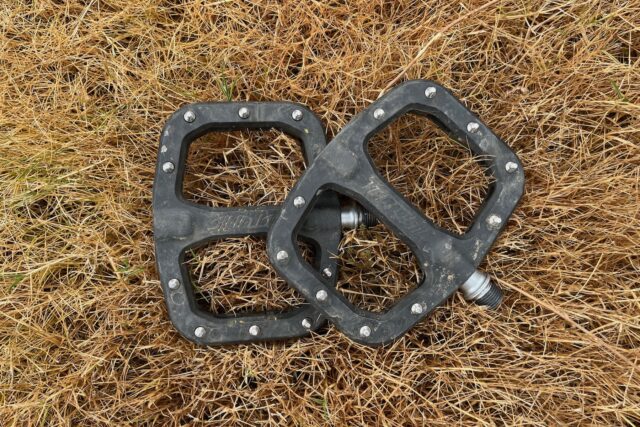
Intro
Tectonic’s Altar V2 pedals really impressed us for their blend of supportiveness and grip, while keeping a relatively low profile. Tectonic has adapted the Alibi’s design to a composite body with the Alibi pedals, which keep Tectonic’s signature long platform and unique traction pins, but use nylon reinforced with recycled carbon fiber to bring the cost down.
There are some changes to the pedal’s shape, too, though, so we were curious to see how the Alibi’s performance would stack up on the trail. Read on for our thoughts after a few months of heavy use.
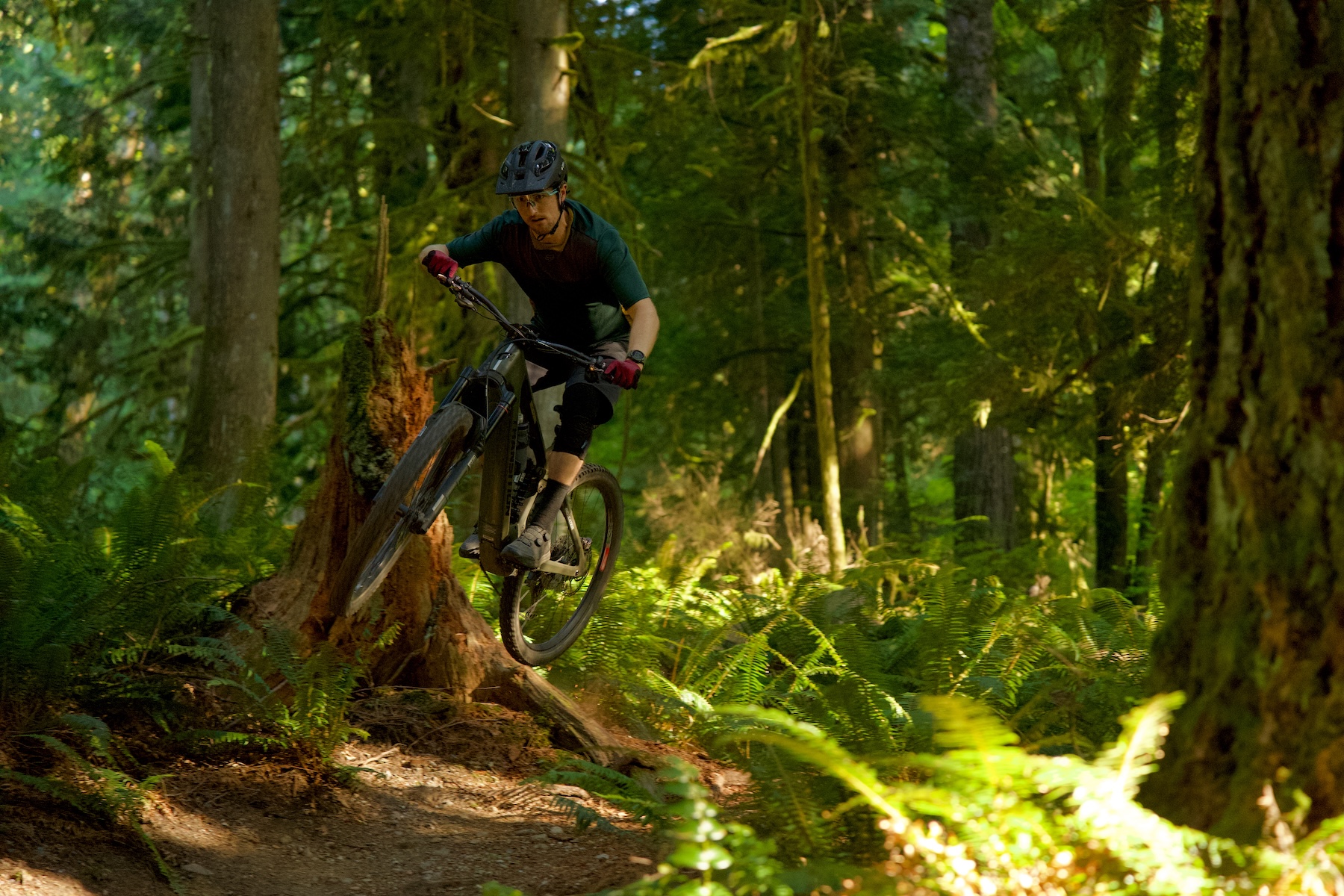
Design
The immediate standout feature of the Alibi pedals is the Sharktooth pin design, which David covered at length in his review of the more premium-priced Altar V2. In short, rather than using tiny individual pins that thread directly into the pedal body, Tectonic has created a double-sided pin design that runs through the pedal, with each pin held in place by a small cap screw that runs through the side of the pedal.
The tips that contact the shoe are still a narrower diameter threaded pin, but the portion running through the pedal body is much thicker in diameter than the pins in any other pedals that we’re aware of. The idea is to prevent damage to the pedal platform from pins ripping out, and the design also allows for easier removal of damaged pins. The double-sided pins mean that the platforms need to be fully symmetrical, though.
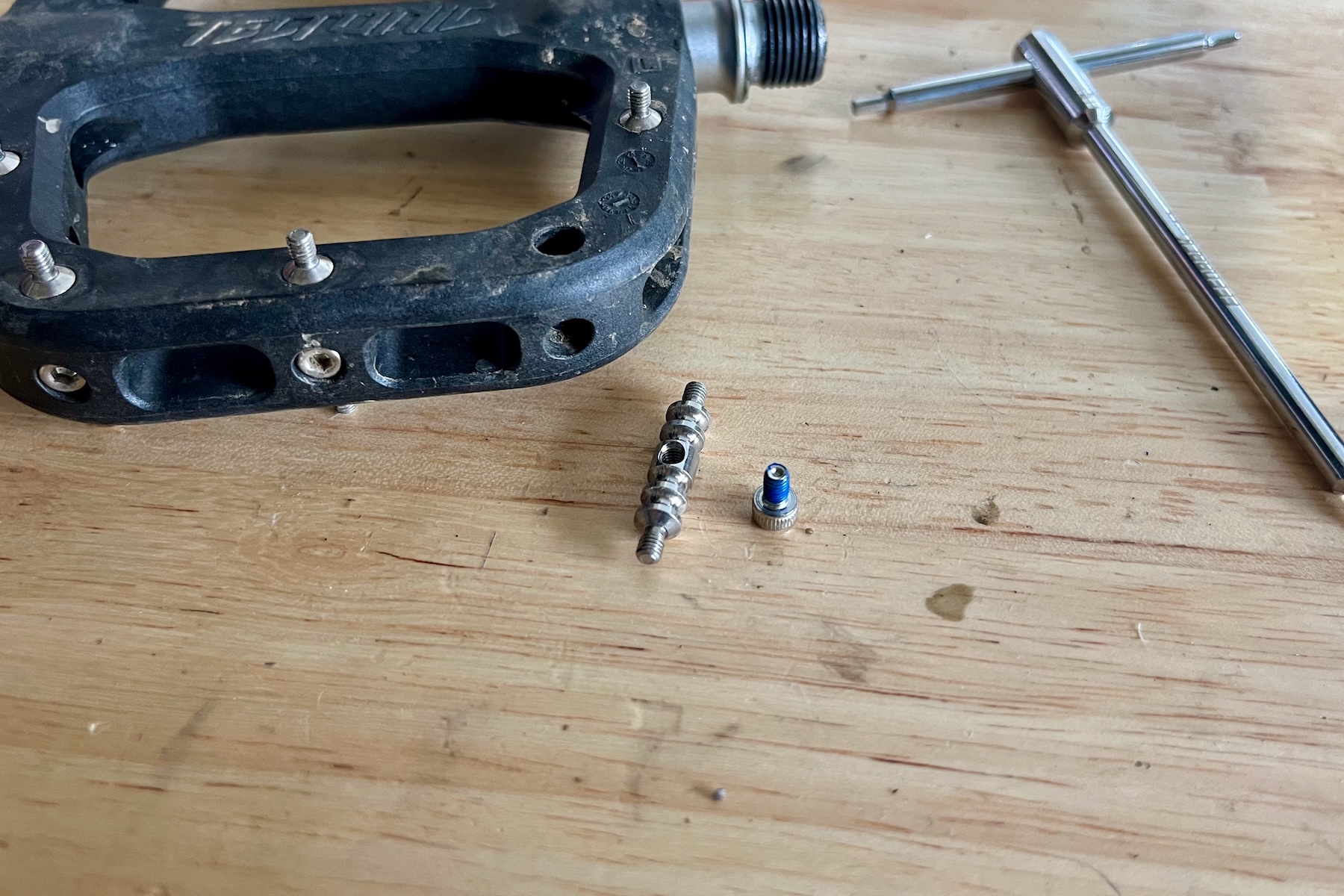
While it’s not like I’m ripping out and damaging the pins and threads of my other pedals all the time, it does happen, and I think Tectonic’s design is promising. It makes particular sense on the Alibi in my opinion, with its nylon composite body, reinforced with recycled carbon fiber called ReVibe. My biggest knock on composite pedals historically has been their poor durability in rock impacts, with most versions easily losing pins and leaving the hole for each pin quite damaged, often beyond repair. Tectonic’s Sharktooth pins provide a much larger surface area to brace each pin, and my Alibi pedals have held up impressively well despite some sizable rock hits.
Like the Altar V2 that David tested, the Alibi has a particularly long platform, measuring 3 mm longer than the Altar V2 at 128 mm. It’s also 1 mm thinner at the center at 14 mm, and the platform contouring creates 2.5 mm of concavity, a touch more than the Altar V2’s 2 mm. That last concavity measurement means that the pedal allows the shoe to sink into the center of the pedal a bit as it engages the pins around the perimeter, which I personally find to aid grip while helping to give a better sense of where your foot is sitting on the pedal than a flatter pedal platform might.
Tectonic claims that the platform width of the Alibi is 108 mm, but the actual usable platform itself measures just 98 mm. That extra 10 mm difference is made up by the exposed spindle length between the pedal body and the face of the crank arm. In fairness, measuring just the actual platform size can be misleading in anticipating actual pedal stance, as some pedals like the Chromag Dagga, Specialized Boomslang, and Tectonic’s own Altar V2 extend the machined platform nearly all the way up to the face of the crank, having just a sliver of exposed spindle. Even so, other pedals like OneUp’s new Wave (which we’re also testing) list their platform size as 107 mm, and it actually measures as such, while taking the exposed spindle into account bumps the width to 112 mm.
On a final design note, the Alibi pedals use a steel axle with an inboard bushing and outboard bearing. They’ve proven durable and are easily replaced with kits from Tectonic when the time comes.
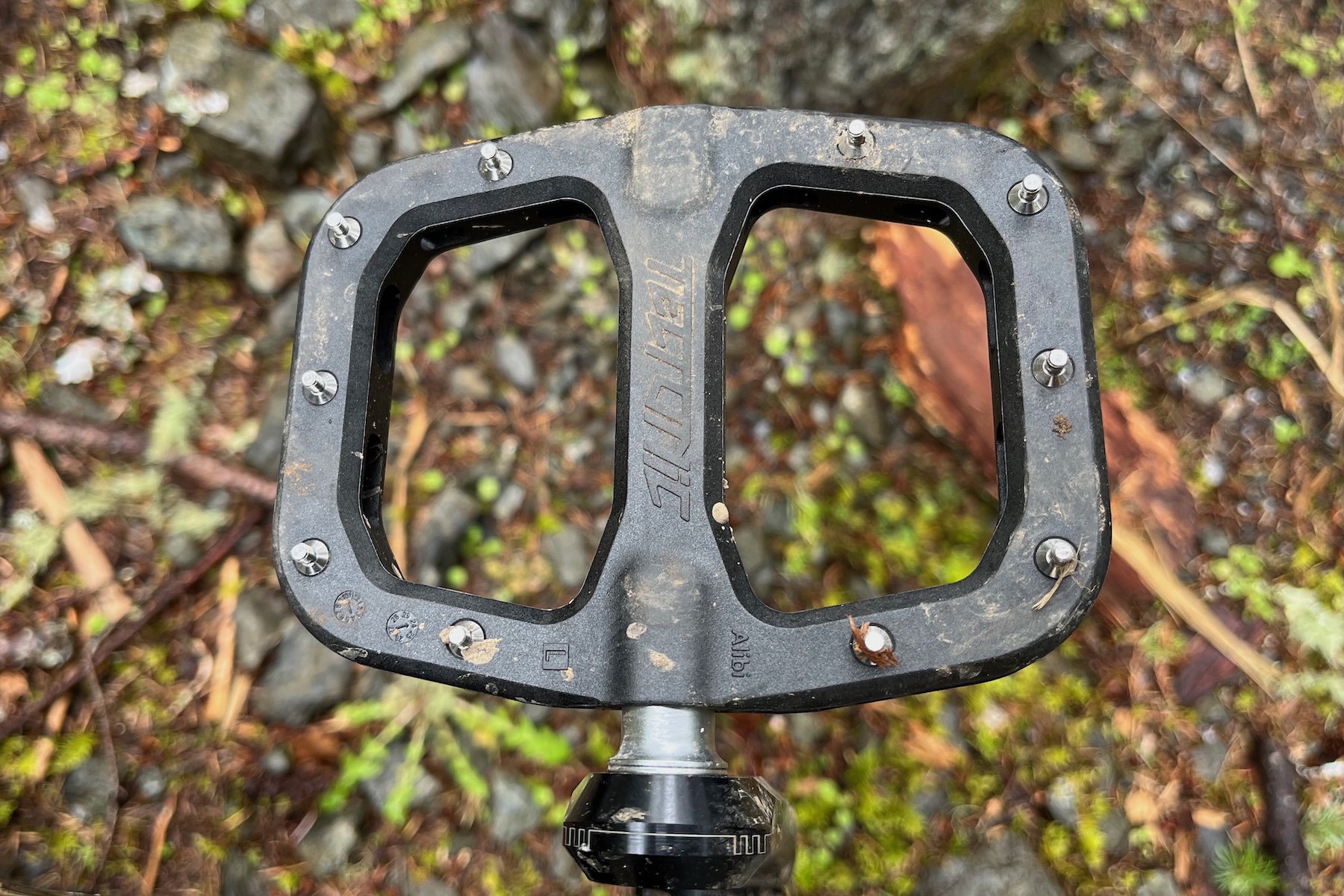
On-Trail Performance
My time with bikes has had several different chapters, but my roots in XC riding mean that I have spent a whole lot of time riding clipped in. I made a switch back to riding flat pedals 15 years ago or so, largely for their better suitability for my increasingly gravity-oriented riding style, and while I still spend maybe 20% of my time riding clipped in on shorter travel bikes, flat pedals have remained my overall preference. That said, I still love the connectedness of riding clipless and prefer especially grippy flat pedals to better mimic that feel.
Fortunately, the Alibi pedals do a good job of offering solid bite in the couple of pairs of shoes that I tried them with (both in wet early-season weather with the Shimano GF800 GTX, and with my day-to-day shoes of choice, the Fox Union BOA Flat). The pins are just slightly shorter than some more aggressive designs out there (like those on the Chromag Dagga in the taller pin position, and the RaceFace Turbine), and they’re also fairly narrow, lending a slightly less locked-in feeling than those other pedals, but the grip is still solid. Tectonic’s unique pin design still uses a threaded design at the tips, like a set screw, which I find creates more mechanical hold in the shoe sole than sharp, but less textured pins like those in the Hope F22.
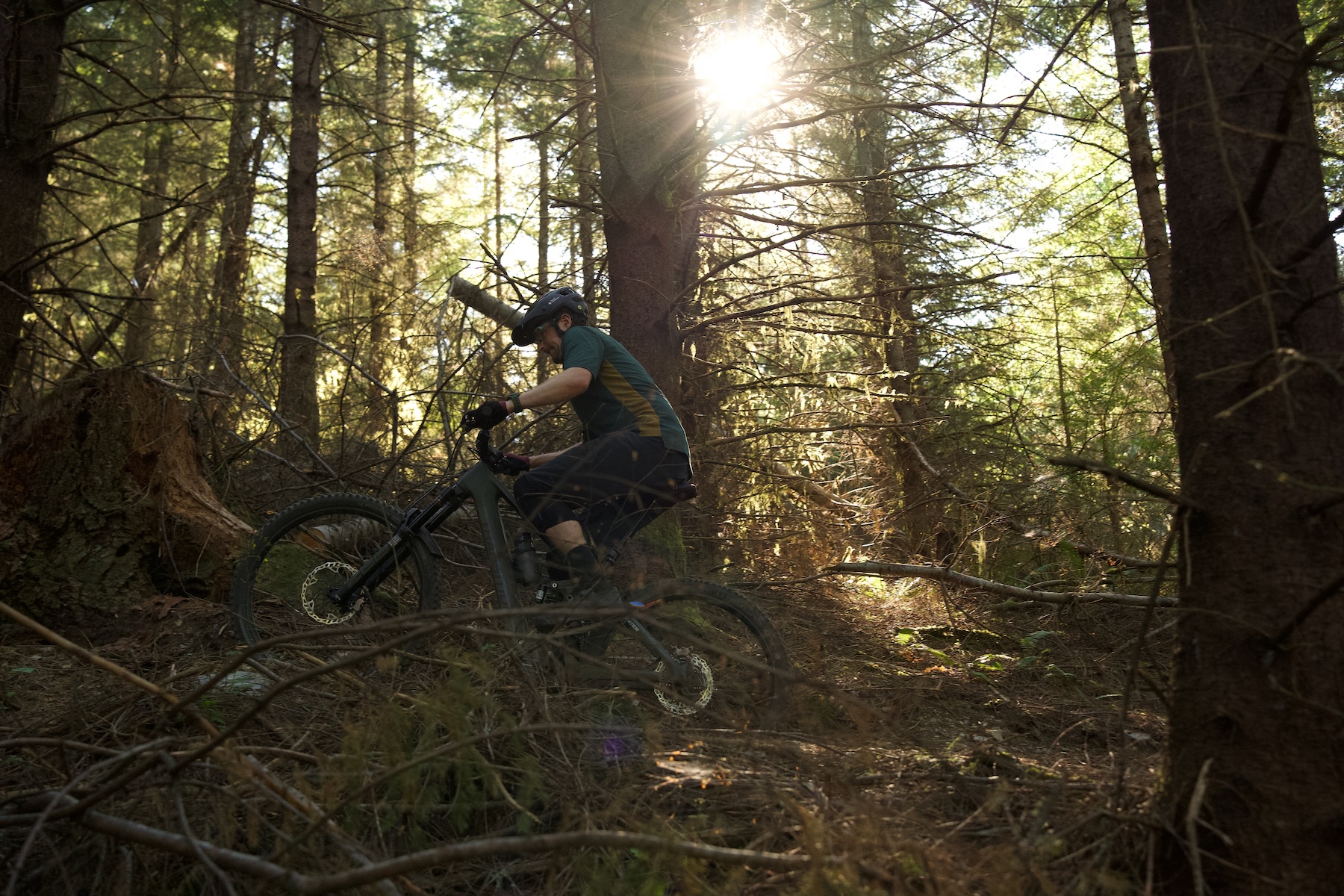
I also think the shape of the Alibi deserves credit for aiding grip. The Alibi platform is fully symmetrical, which is typically not my preference, but it works quite well here. I find that some other symmetrical pedals, like the Deity T-Mac, can have a tendency to roll forward underfoot while climbing. I found the Sensus Crue pedals that I tested last year to resist that tendency to roll thanks to their slightly elongated platform shape over the T-Mac, and the Alibi pedals measure a full 11 mm longer than even the Crues, the result being a very solid and supportive platform underfoot. I had no issues with pedal roll throughout the test, and I didn’t feel any sort of foot fatigue even during longer days in the bike park, where smaller pedals can start to feel a little harsh after lots of laps. The long platform still allowed me to drop my heels without issue, but I could imagine folks with smaller feet struggling with the latter due to the Alibi’s elongated shape.
The one area where the Alibi pedals fell short for me was in their width, and I find Tectonic’s measurement a bit misleading. As discussed in the Design section, Tectonic states the pedal width at 108 mm, but that includes the exposed section of the axle between the platform and crank arm, cutting the actual platform width to 98 mm. That’s pretty narrow by modern standards, and while I still found the length of the Alibi to help it feel quite stable, I still felt like I didn’t have much flexibility in foot placement. I frequently found myself adjusting my foot a bit to avoid either rubbing the crank or standing too far over the outside edge of the pedal to the point that my foot wanted to roll off the outside a bit. The narrow stance does help with avoiding rock strikes, of course, but I’d take more width any day.
Folks with particularly small feet may not get along with the huge 128 mm length of the platform, and folks with larger feet may struggle with the narrow platform width. If you’re in the realm of average, though, they may be a great option that balances obstacle clearance with a supportive and truly concave platform.
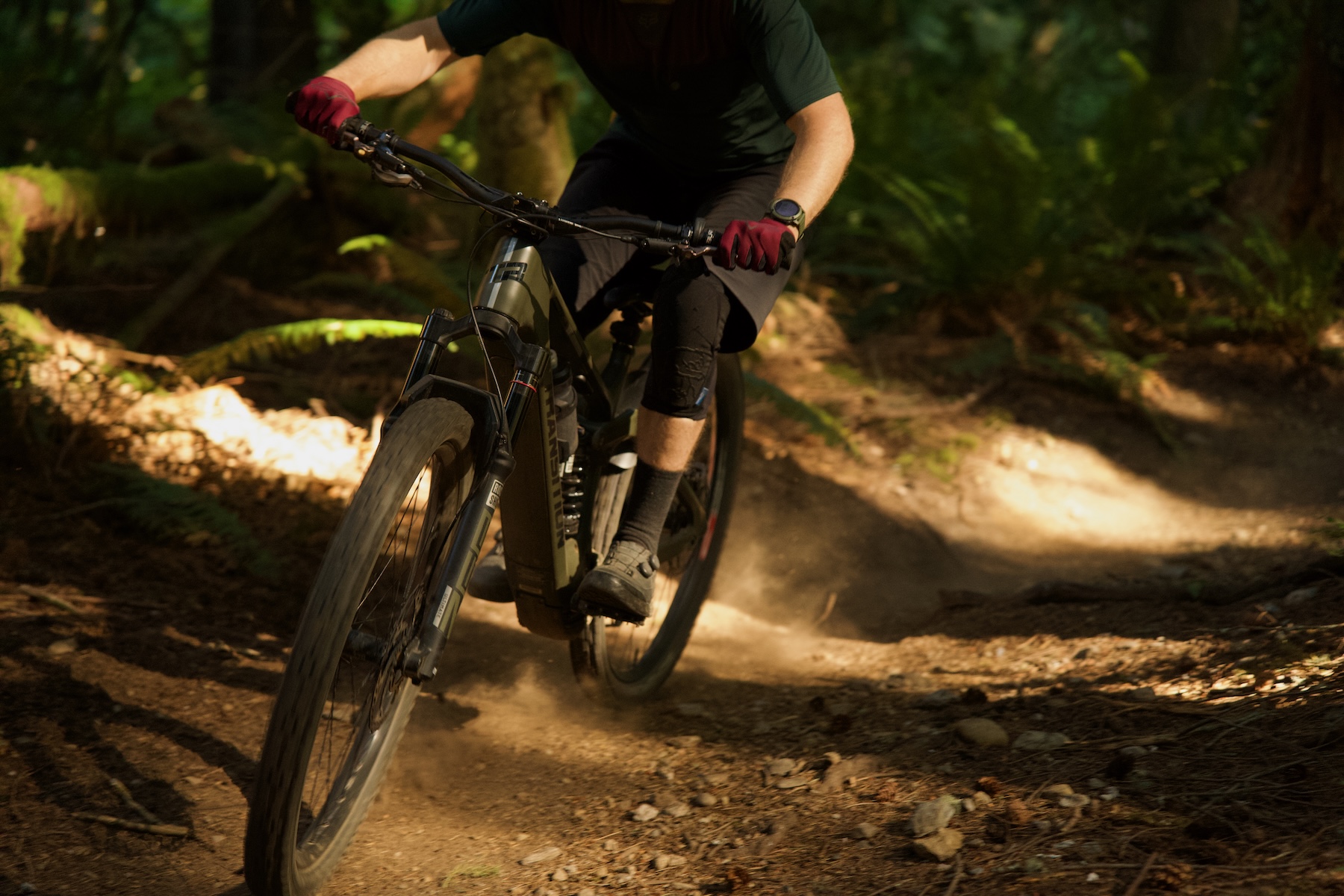
Durability
When I first saw Tectonic’s novel Sharktooth pins on the Altar V2, I immediately envisioned them as an especially good solution for composite pedals, and the Alibi has proven that hypothesis. Not only are they immensely resistant to bending damage, but the design has protected the pedal body from any sort of consequential damage despite some pretty heavy hits.
I’m also happy to report that Tectonic’s bearings and seals have held up well. They rely on a fairly common inboard bushing and outboard bearing design, which is easily serviceable, and the sealing has kept the grease looking fairly fresh still after some wet spring riding, followed by the moondust of summer.
Of course, many folks sing the praises of composite pedals for their ability to glance off of rocks rather than grabbing, as aluminum pedals often tend to. I personally don’t struggle all that much with pedal strikes for the most part, but the Alibi pedal bodies have shrugged off plenty of hits and held up nicely. I can’t say how much the recycled carbon fiber helps in shoring up the nylon’s durability, but the Alibi is a solid pedal.
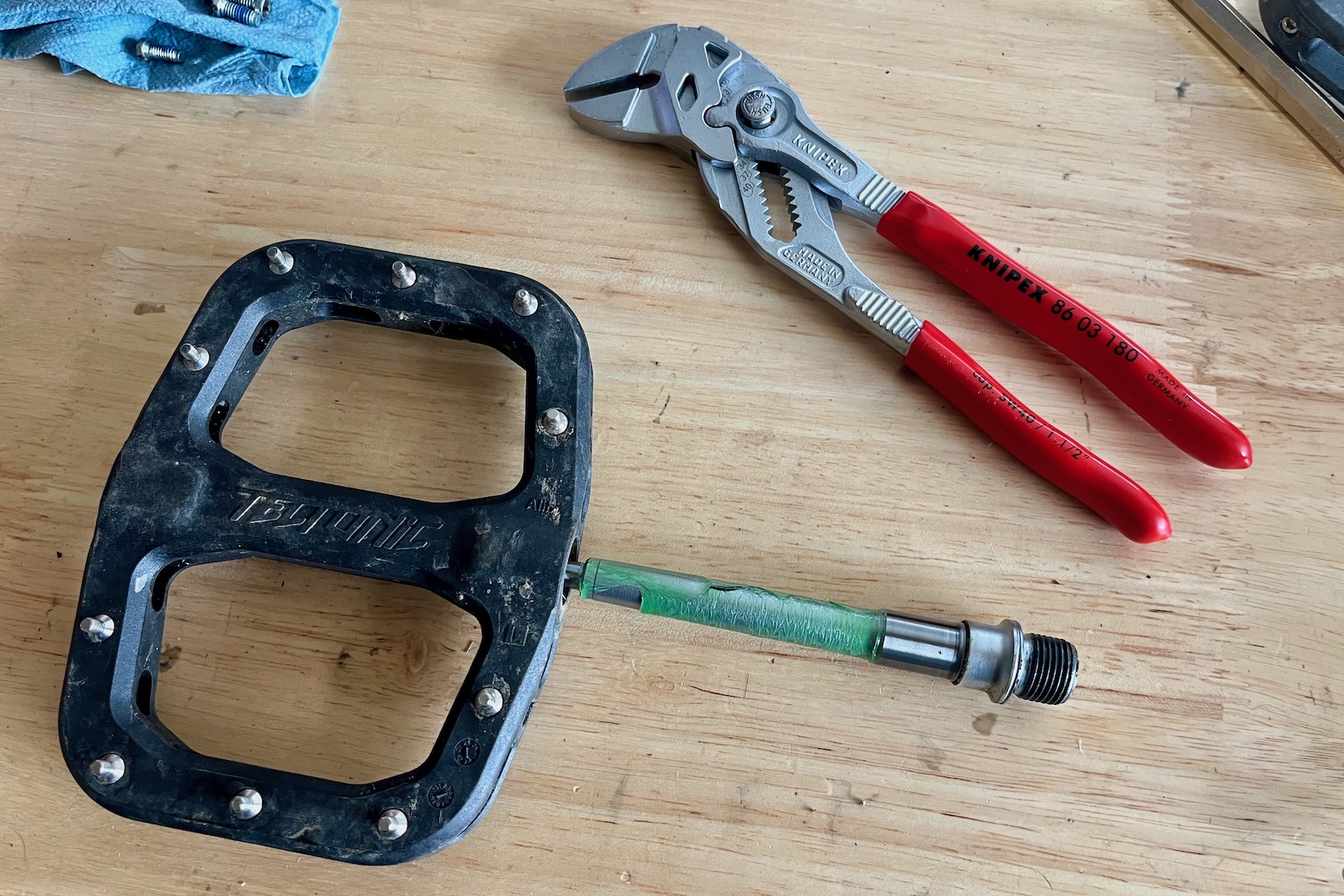
Bottom Line
At $100 USD, Tectonic’s Alibi pedals bring some interesting features and promising durability to the often more budget-oriented world of composite pedals. From an external and internal durability standpoint, they are just as dependable as most modern aluminum pedals, many of which cost something like twice as much. The lengthy platform design and decently grippy pins offer solid support and traction, but I can’t help but feel like the whole package is let down slightly by the platform width. Add a couple of millimeters to the platform width, and they’d very likely be one of my favorites.

Thanks for the review. This is the first I’ve read of the Alibis.
I’ve been eyeing these pedals for a while now, as a cheaper and lighter alternative to Pedaling Innovations’ Catalyst pedals. I have a mid-foot pedal stance and the Alibi front-to-back pin-to-pin distance (115 mm) is almost the same as the Catalysts’ (117 mm). Good to know the actual usable width of the platform as well (98 mm is still better than the Catalysts’ claimed 95 mm width).
Cheers